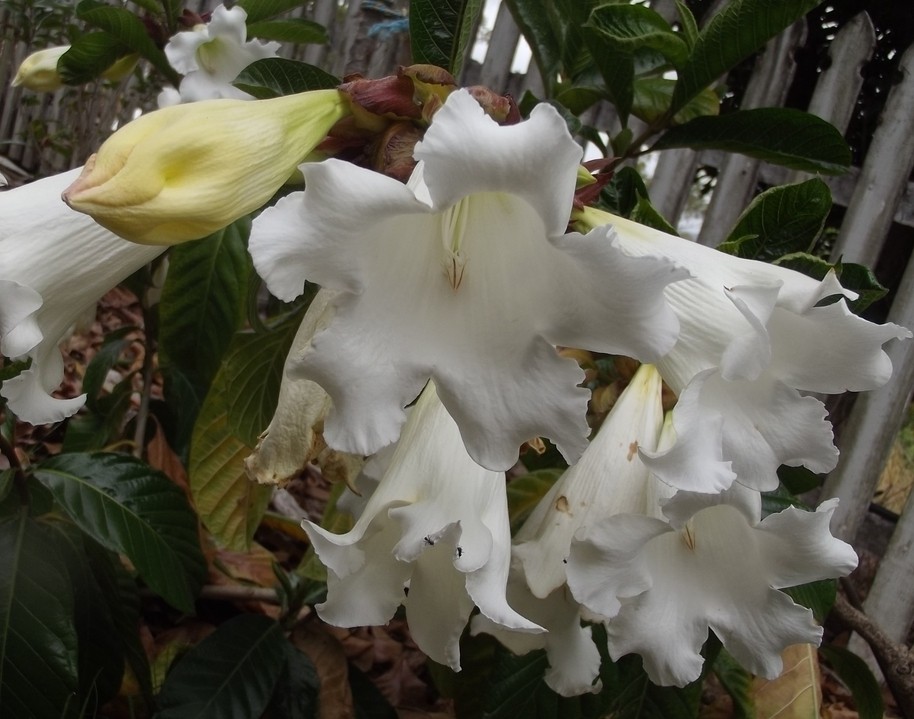Oxera splendida
(Oxera splendida)

Description
Oxera splendida is an evergreen vine in the family Lamiaceae which produces white, fragrant flowers and white, egg-shaped fruit. It naturally is occurs in the tropical rain forests of tropical Asia and Australia and is often sighted along rain forest margins such as roads. Some common names include October Glory, Glory Vine, Potato Vine and Fragrant Faradaya. Australian indigenous names include Garanggal used from Cairns to Yarrabah, Buku used in the Tully River area, Koie-yan used at Dunk Island and Djungeen used by the Girramay clan. This woody, twining, evergreen, vine can grow up to 15 cm (5.9 in) in diameter. The ovate, glossy green leaves can grow to 24 cm (9.4 in) long and 13 cm (5.1 in) wide and are attached to the stem in pairs or triples with petioles up to 8 cm (3.1 in) long. It flowers and fruits in the warmer months from August to April. The white, fragrant flowers are abundant but short lived, sometimes lasting only a single day. Each flower measures about 4.5 cm in diameter. The fruit is white and fleshy, about 8 cm (3.1 in) long and 5 cm (2.0 in) in diameter and resembles a potato or large egg. It contains a single large seed with a rough brown seed coating 1 to 3 mm (0.039 to 0.118 in) thick. The species was first described as Faradaya splendida in 1865 by Victorian government botanist Ferdinand von Mueller in Fragmenta Phytographiae Australiae, based on plant material collected by John Dallachy near Rockingham Bay. This was the first species to be included in the genus Faradaya. In 2015 a revision of the genera Oxera, Clerodendrum, Faradaya, and Hosea resulted in Faradaya being moved to Oxera. The species occurs in Sulawesi, the Moluccas, New Guinea, the Solomon Islands and Queensland. It can be found in rain forest, hill forest and swamp forest from sea level to 2000m. The tolerant vine can grow in clay and humus, and can inhabit both undisturbed, primary forest and previously disturbed, secondary forests. It is common to see the white fruited vine along rain forest margins such as roads. For several Australian butterflies, this species is a larval food plant. Those butterflies include Pseudodipsas eone, Hypochrysops miskini, Shining Oak-blue, Hypolycaena phorbas and Pale ciliate blue. For at least P. eone, this butterfly will seek out Oxera splendida leaves specifically for the extrafloral nectaries. The nectaries found on the leaves produce nectare and P. eone will only feed one leaves with this characteristic.
Taxonomic tree:







